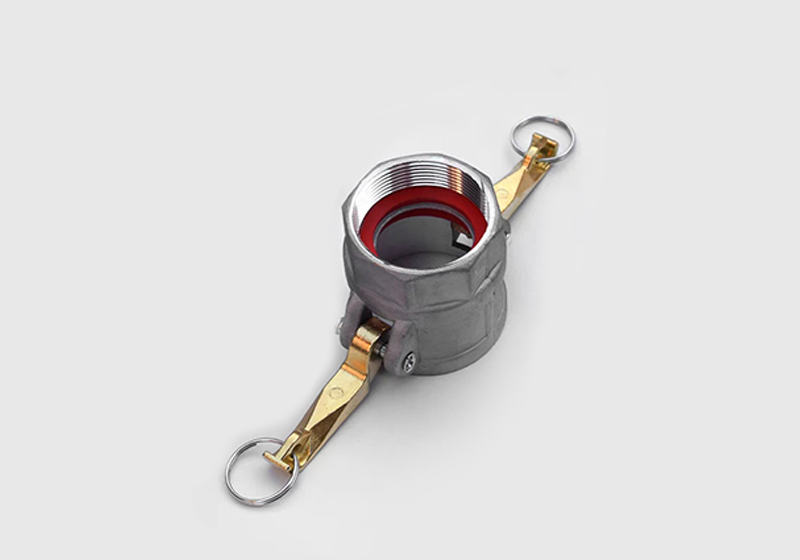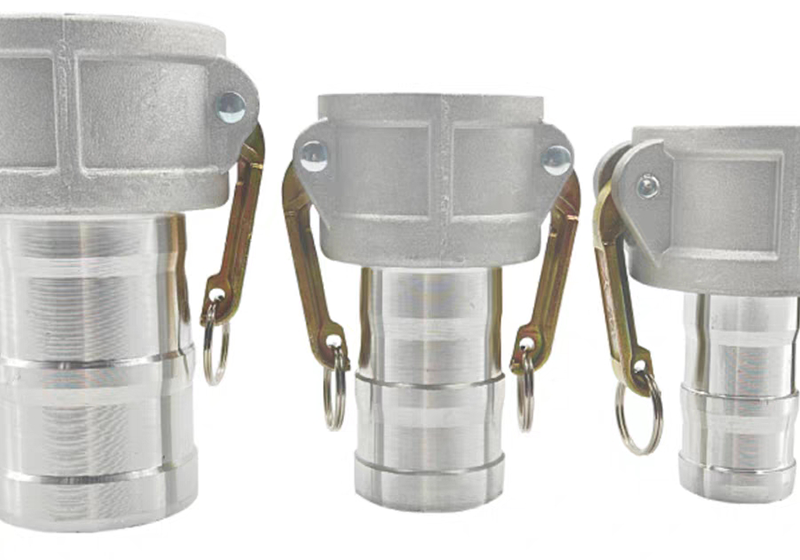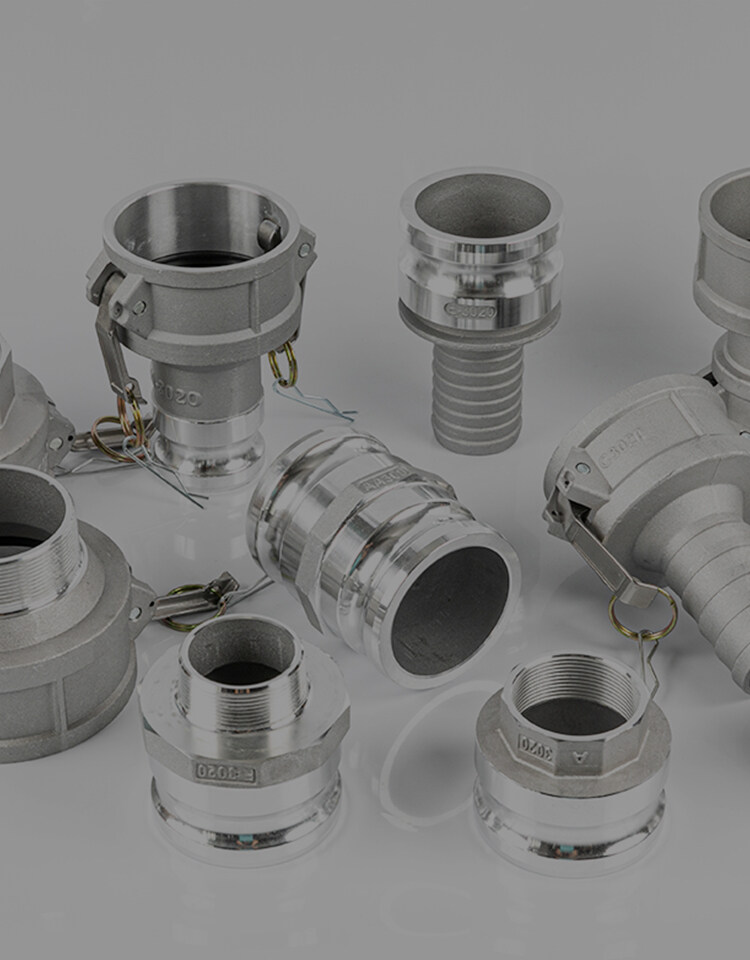Email format error
Email cannot be empty
Email already exists
6-20 characters(letters plus numbers only)
The password is inconsistent
Email format error
Email cannot be empty
Email does not exist
6-20 characters(letters plus numbers only)
The password is inconsistent

News
Here, you can describe a piece of text you want to express

Unlocking the Potential: Exploring Male to Male Camlock Fittings in Fluid Connection
In the realm of fluid transfer systems, the efficiency and reliability of connections play a pivotal role. One such key element that demands attention is the “male to male camlock” fitting. This article delves into the intricacies of male camlock fittings, exploring their applications, advantages, and the diverse range of male-oriented components in this domain.
Understanding Male Camlock Fittings
Camlock fittings, also known as cam and groove couplings, are a staple in the fluid transfer industry due to their ease of use and reliable performance. The male camlock fitting, in particular, is a vital component within this family of connectors. Designed for quick and secure attachment to hoses, pipes, and tubing, male camlock fittings are integral to operations in various sectors, including agriculture, chemical processing, and firefighting.
Introduction to Male Camlock Fittings
Male camlock fittings are designed to interface seamlessly with female couplers, creating a tight seal that can handle both liquids and gases. These fittings are named for their camming action, which locks the male and female parts together. The male fitting has a cylindrical shape with a groove at one end and arms, or “cams,” that protrude from the side. When inserted into a female coupler and the arms are depressed, the two pieces lock together, forming a secure connection that can withstand significant pressure without leaking or coming apart.
The Anatomy of Male Camlock Fitting
The anatomy of a male camlock fitting is relatively simple, yet highly effective. The fitting consists of the “head” or “adapter,” which is the part that connects to the hose or pipe. This head is typically threaded or barbed to ensure a secure attachment to the hose. The other end of the fitting, known as the “tail,” is designed to insert into the female coupler. The tail end is smooth and cylindrical, with a precise diameter that matches the corresponding female part.
Around the head of the male fitting are the cam arms, which are essentially levers that can be flipped up or down. In the open position, the arms allow the male fitting to be inserted into or removed from the female coupler. Once the male end is in place, the arms are flipped down, and the cam action draws the male and female fittings together, compressing the gasket between them to create a tight seal.
The materials used in the construction of male camlock fittings vary depending on the application. Common materials include stainless steel, aluminum, brass, and polypropylene. Each material offers different benefits: stainless steel is known for its strength and corrosion resistance, making it suitable for harsh environments; aluminum provides a lightweight yet durable option; brass is often chosen for its corrosion resistance and aesthetic appeal; and polypropylene is used in applications requiring chemical resistance and lower cost.
Key Features and Benefits
Male camlock fittings offer several key features and benefits that make them a preferred choice in many industries:
Quick and Easy Connection: The camlock design allows for rapid connection and disconnection without the need for tools, saving time and reducing labor costs.
Versatility: Male camlock fittings can be used with a wide range of fluids, from water and oils to chemicals and powders, making them suitable for diverse applications.
Reliability: The secure locking mechanism ensures a leak-proof connection, which is essential for maintaining the integrity of fluid transfer systems.
Durability: High-quality materials and construction mean that male camlock fittings can withstand repeated use and exposure to various environmental conditions.
Safety: The simplicity of the camlock system reduces the risk of incorrect assembly, which can lead to spills or accidents.
Common Applications
Male camlock fittings are used in a variety of settings, including:
Agricultural: For irrigation systems, fertilizer distribution, and water transport.
Industrial: In manufacturing processes, bulk material handling, and waste management.
Chemical: For transferring acids, solvents, and other corrosive substances.
Oil and Gas: In fuel delivery systems and petrochemical processing.
Firefighting: For quick deployment of hoses in emergency situations.
Exploring Male-Oriented Components
The world of camlock fittings is diverse, with various components tailored to specific needs and applications. Male-oriented camlock components are designed to offer secure and efficient connections in fluid transfer systems. Let’s explore the different male-oriented components and their unique roles within these systems.
Male Coupling: Enhancing Fluid Transfer Efficiency
The male coupling is a fundamental component of the camlock system. It consists of a grooved nipple or adapter that can be easily inserted into a female coupler. The male coupling is designed to maximize fluid transfer efficiency by allowing for quick and secure connections without the need for threading or tightening. This design not only saves time during the connection process but also minimizes the risk of cross-threading or over-tightening, which can damage the components and lead to leaks.
Male couplings are available in various sizes and materials, each suited to different pressures, temperatures, and chemical compatibilities. For instance, stainless steel male couplings are ideal for high-pressure applications and corrosive environments, while polypropylene couplings are suitable for less demanding conditions and offer chemical resistance at a lower cost.
Male-Female Camlock Fittings: Achieving Versatility in Connections
The versatility of camlock fittings is further enhanced by the combination of male and female components. Male-female camlock fittings are designed to interlock seamlessly, providing a secure and leak-proof connection. The male part of the fitting, with its outward-facing groove, locks into the female part, which features an internal groove and cam levers that secure the connection.
This male-female dynamic allows for a wide range of applications, from connecting hoses of different diameters to adapting a system to accommodate new equipment. The ease of use and the ability to quickly change configurations without tools make these fittings invaluable in dynamic environments where time and flexibility are of the essence.
Male Camlock Adapter: Bridging the Connection Gap
In fluid transfer systems, there are often scenarios where hoses or pipes of different types or sizes need to be connected. The male camlock adapter serves as a bridge in these situations, providing a compatible connection point between disparate components. These adapters can have male camlock ends with different types of connections, such as threaded, flanged, or barbed, on the other end, allowing them to mate with a variety of equipment and fittings.
The adaptability of male camlock adapters makes them essential for customizing fluid transfer systems to meet specific requirements. They enable the integration of new components into existing setups, ensuring that systems can evolve and expand without the need for complete overhauls.
Male Camlock Connector: The Nexus of Reliability
At the nexus of any reliable fluid transfer system is the male camlock connector. This component is designed to provide a dependable connection that can withstand the rigors of frequent use and harsh conditions. Male camlock connectors typically feature a locking mechanism that ensures a secure fit, preventing accidental disconnections and leaks.
The reliability of male camlock connectors is critical in applications where fluid integrity is paramount, such as in the transfer of hazardous or sensitive materials. These connectors are rigorously tested to meet industry standards, ensuring that they perform consistently under various conditions.
Applications Across Industries
The versatility of male camlock fittings allows them to be used across a wide array of industries. Each sector benefits from the unique properties of these fittings, such as their quick-connect and disconnect capabilities, durability, and ability to maintain a secure connection under varying pressures and environmental conditions. Let’s explore how male camlock fittings are applied in different industries and the impact they have on operations.
Male Camlock in Agriculture: Streamlining Irrigation Systems
In the agricultural sector, efficient water management is crucial for crop irrigation, livestock care, and other farming activities. Male camlock fittings are extensively used in irrigation systems due to their ease of use and reliability. Farmers can quickly connect and disconnect hoses and pipes to move water across large fields, which is essential during planting and harvesting seasons when water requirements can change rapidly.
These fittings are also used in the distribution of fertilizers and pesticides through sprayers. The quick-connect feature of male camlock fittings allows for the rapid change of tanks and hoses, reducing downtime and increasing productivity on the farm. The robust construction of these fittings ensures they can withstand exposure to various chemicals and the outdoor elements, making them a durable choice for the agricultural industry.
Industrial Applications: Navigating Fluid Dynamics
In industrial settings, fluid transfer is a critical component of many processes, including manufacturing, cooling, and waste management. Male camlock fittings are used to connect hoses and pipes that carry water, oils, and other industrial fluids. They are particularly valuable in situations where fluids need to be changed or lines need to be cleaned regularly, as their quick-disconnect feature minimizes the time required for these tasks.
The industrial sector also benefits from the safety aspect of male camlock fittings. In environments where hazardous materials are transferred, the secure locking mechanism of these fittings helps prevent spills and leaks, which can lead to workplace accidents or environmental contamination.
Male Camlock in Petrochemicals: Ensuring Safety and Precision
The petrochemical industry has stringent requirements for fluid transfer systems due to the volatile and hazardous nature of the materials involved. Male camlock fittings are used in this industry for their precision and safety. They provide a secure connection that can handle the high pressures and temperatures associated with petrochemical processes.
These fittings are used in the transfer of crude oil, refined products, and chemicals. The ability to quickly connect and disconnect hoses and pipes is essential during loading and unloading operations at refineries, storage facilities, and tanker ships. The reliability of male camlock fittings ensures that these operations can be carried out without the risk of leaks, which is paramount for worker safety and environmental protection.
Firefighting and Emergency Services: Rapid Response with Reliable Connections
In firefighting and emergency services, time is of the essence. Male camlock fittings are used in the quick deployment of hoses to combat fires or manage other emergencies involving water or foam. The ability to rapidly connect hoses to hydrants, pumps, and other firefighting equipment is critical in saving lives and property.
The durability of male camlock fittings is also crucial in these applications, as they must withstand the high pressures and mechanical stresses associated with firefighting. Their reliability ensures that firefighters can focus on their challenging tasks without worrying about the integrity of their water supply lines.
Water Treatment and Environmental Management: Maintaining System Integrity
Water treatment facilities and environmental management operations rely on male camlock fittings to maintain the integrity of their fluid transfer systems. These fittings are used in the transfer of water, sludge, and treatment chemicals. The secure connections provided by male camlock fittings help prevent contamination and leaks, which are essential for protecting water quality and the environment.
In environmental cleanup operations, such as oil spill response, male camlock fittings enable quick and efficient setup of containment booms and skimmers. Their ease of use and reliability ensure that response teams can act swiftly to mitigate environmental damage.
Advantages of Male to Male Camlock Fittings
Male to male camlock fittings are a specific type of fitting that offer several advantages in fluid transfer applications. These fittings are designed to connect two female camlock ends, which is particularly useful in extending hose lengths or changing from one hose type or size to another. Below, we explore the various benefits that male to male camlock fittings provide, making them a preferred choice for many industries.
Efficiency Redefined: Swift Connection and Disconnection
One of the most significant advantages is the efficiency they bring to the connection process. With their simple locking mechanism, these fittings can be quickly and securely connected or disconnected without the need for specialized tools or extensive labor. This feature is particularly beneficial in situations where time is of the essence, such as in emergency response scenarios or during critical industrial processes where downtime can be costly.
The quick-connect and disconnect capability also allows for faster setup and breakdown times, which is essential during maintenance or when systems need to be reconfigured. This efficiency translates directly into cost savings, as it reduces the amount of time workers spend on connecting and disconnecting hoses, allowing them to focus on other tasks.
Durability: Weathering the Harshest Environments
Durability is a key factor in the design of male to male camlock fittings. These fittings are constructed to withstand the rigors of harsh environments, including extreme temperatures, high pressures, and exposure to corrosive substances. The materials used in manufacturing male to male camlock fittings, such as stainless steel, aluminum, and polypropylene, are selected for their strength and resistance to wear and tear.
This durability ensures that the fittings maintain their integrity over time, even with frequent use. It also means that they can be relied upon in critical applications where failure is not an option, such as in the transfer of hazardous materials or in harsh outdoor conditions.
Versatility: Adapting to Diverse Fluids
The versatility is another key advantage. These fittings are designed to handle a wide range of fluids, from water and oil to aggressive chemicals. This adaptability makes them suitable for use in various industries, including agriculture, chemical processing, and petrochemicals.
The ability to connect different types or sizes of hoses also adds to the versatility of these fittings. This can be particularly useful when a system requires modifications or when integrating new components. Male to male camlock fittings can help accommodate these changes without the need for extensive alterations to the existing setup.
Safety: Minimizing Risks in Fluid Transfer
Safety is paramount in any fluid transfer system, and male to male camlock fittings contribute to a safer working environment. The secure locking mechanism of these fittings minimizes the risk of accidental disconnections, which can lead to spills, leaks, or exposure to dangerous substances. By providing a reliable seal, male to male camlock fittings help prevent incidents that could harm workers or the environment.
Additionally, the ease of use associated with camlock fittings reduces the likelihood of improper connections, which can also pose safety risks. Workers can quickly learn how to operate these fittings correctly, further reducing the potential for errors during the connection process.
Environmental Protection: Preventing Spills and Leaks
In line with safety, male to male camlock fittings play a role in environmental protection. By ensuring a secure and leak-proof connection, these fittings help prevent the release of fluids into the environment. This is especially important in industries where spills can have significant environmental impacts, such as in oil and gas or chemical manufacturing.
The reliability of male to male camlock fittings means that they can be trusted to maintain a tight seal, even under fluctuating pressures or when transferring volatile substances. This reliability is crucial for companies looking to comply with environmental regulations and demonstrate their commitment to sustainability.
Conclusion: Embracing the Power of Male Camlock Connections
In the intricate web of fluid transfer systems, the male to male camlock fitting emerges as a stalwart player, providing efficiency, reliability, and versatility. As industries evolve, these fittings continue to unlock new possibilities, ensuring seamless connections that stand the test of time.

